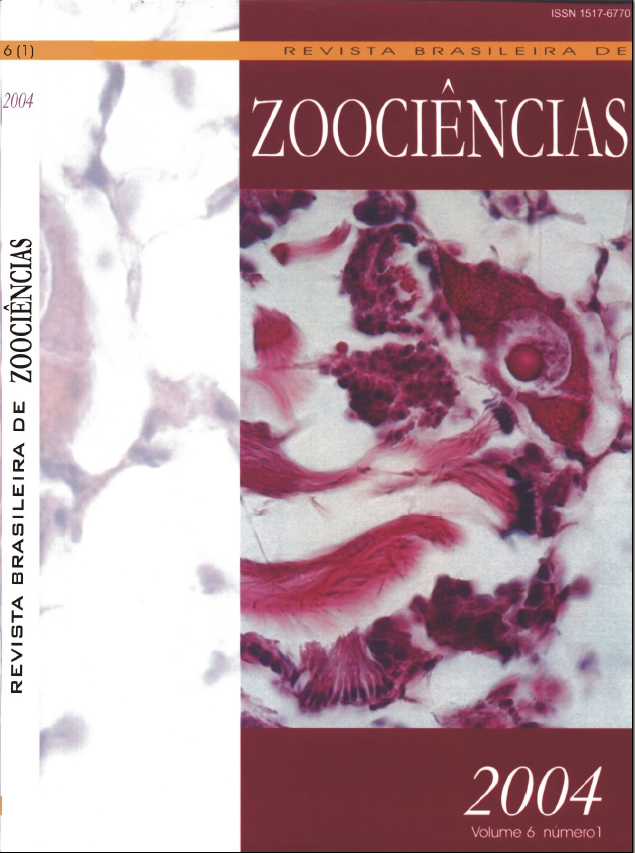Resistência à dessecação em três espécies de moluscos terrestres: aspectos adaptativos e significado para o controle de helmintos
Abstract
The pulmonates molluscs act as intermediate hosts for several helminth species, parasites of humans and domestic animals.The control of the snails populations by moluscicides substances have been used as a parasite populations control measure. However, the efficient control of parasites by this mean depends on the knowledge of the snails biology and behaviour, as well as the elucidation of abiotic factors influence over these aspects. The aim of this work was to evaluate the resistence to dessication in three land snail species, Subulina octona (Bruguière, 1789); Leptinaria unilamellata (d’Orbigny, 1835) e Bradybaena similaris (Férussac, 1821), submited to a continuous exposition to 35 oC temperature, for 48 hours. The number of dead individuals, the presence of epiphragms and the number of active individuals were verified at 12 hours intervals. The cephalopodal mass retration into the shell was mensured. After 48 hours of exposition, the snails were tranferred to plastic boxes containing moistened humus. The snails behaviour was verified by direct observations. Dead individuals were counted and the time for arousal was observed.Downloads
Download data is not yet available.
Downloads
Published
2009-08-27
Issue
Section
Artigos



